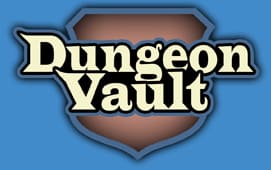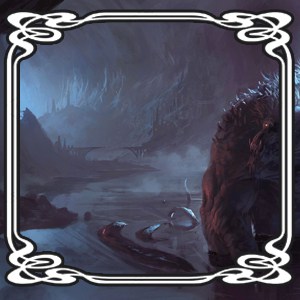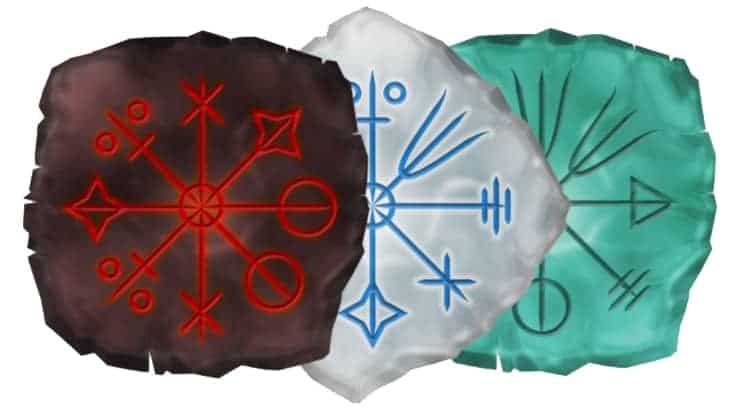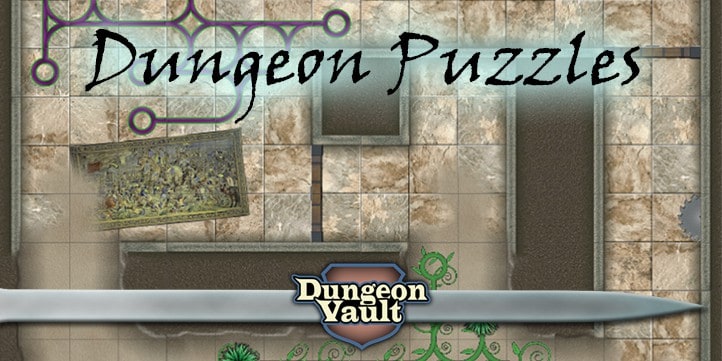
It seems like half my character’s career is spent in caves. The underdark has a certain appeal to DMs and players alike. So it makes sense that you would want to put D&D puzzles into caves. But what makes a D&D cave puzzle different from other puzzles. In this article, we’ll explore caves and their puzzles.
There are a couple of things that make caves ideal for using puzzles. The most obvious one is perhaps that caves restrict character movement. Players can’t (usually) just travel through cave walls which means the DM can place a puzzle that cannot be escaped easily. This comes in very handy. Here’s why.
If players can leave the puzzle area they often take crucial puzzle pieces with them. And they tend to lose or sell them. This destroys all the hard work the DM put into the puzzle. So having a closed-off area is great. The door shuts, a wall caves in, claustrophobia sets in, and the players must puzzle their way out of their predicament. Perfect.
D&D Cave Puzzles and Darkness
Another great benefit of using caves used to be that you could hide things in the dark. But things have changed a lot since 1e edition D&D. Nowadays there are more races and somehow almost everyone suddenly has darkvision. So using non-magical darkness in your puzzles doesn’t work as well. But we can STILL use this to our advantage. Here’s how.
Darkvision grants PCs the ability to see in the dark, but it doesn’t allow them to see color. For that, they still need a source of light. Most parties just rely on their darkvision and forget to light a torch or bring a light source. You can use this to create a puzzle that is harder to solve if players can’t distinguish between colors.
My Runestone Puzzles are perfect for this. Using runestones already fits the cave theme but as an added bonus, they also come in different colors. And knowing what color a stone is greatly affects the difficulty of the puzzle.
So as long as your pcs rely on darkvision, you give them a monochromatic version of the puzzle. But once they do light a torch, you show the colors. You can use these puzzles to lock a magical dwarven door, summon a creature who will create a tunnel, and so on.
I also like to give puzzle pieces to monsters. Perhaps the players can see a runestone floating around in an Ooze, or they see a mimic swallow one of the stones. You can change it up by adding combat.
Another way to add urgency is for water to slowly rise in the area of the cave puzzle or for lava to start flowing in at higher levels. D&D caves are filled with constant dangers and that doesn’t stop just because players encounter a puzzle.
When the D&D Cave is the Puzzle
You can put puzzles into caves to your heart’s content. And you can even layer puzzles to create some very interesting effects. Here’s an article I wrote about layering puzzles (and it includes two free puzzles).
But what if, instead of putting puzzles into caves, the very cave becomes the puzzle? That’s what I’ve done with a puzzle pack called Dungeon Puzzles. This puzzle changes an entire cave or dungeon into one giant puzzle.
With Dungeon Puzzles players are given a fragmented map of the dungeon and are warned that without solving the puzzle first they are certain to get lost. No magic can guide players through short of a wish spell. Next, they must solve the cave puzzle with 4 by 4-inch cave tiles.
And here’s the cool part. When they are done, they will have cooperatively laid out the map for exploring the puzzle. So as a DM you can immediately use the solved puzzle as a cave map to play on.

Have Fun!
– Paul



